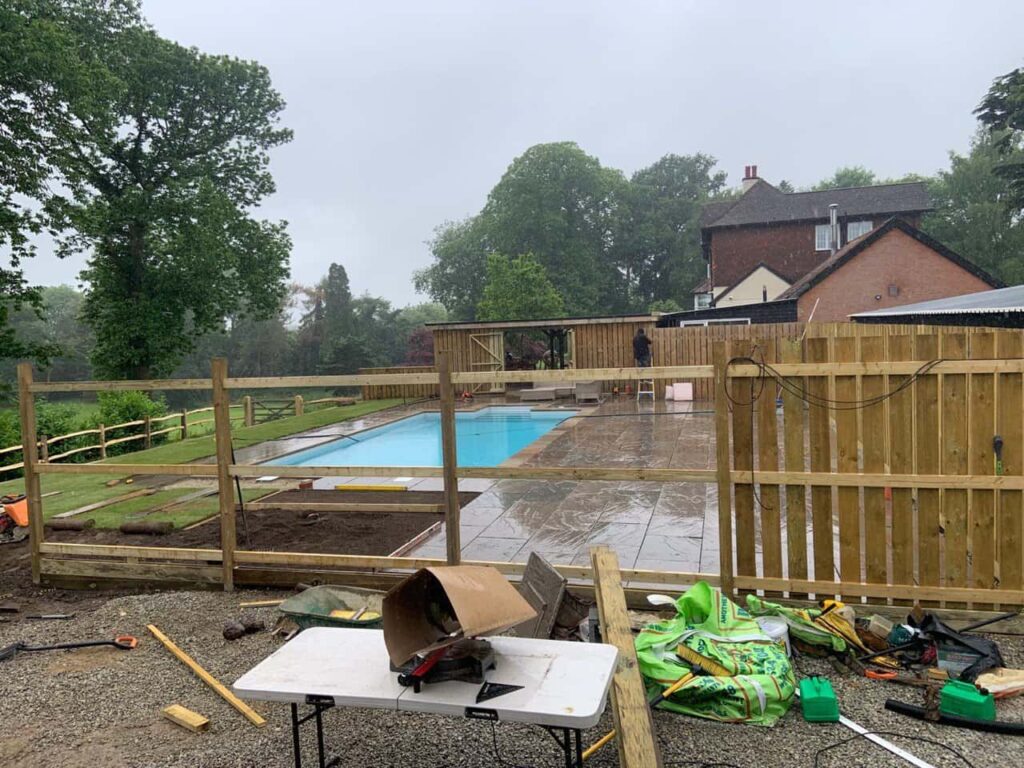Comparing Acoustic Fencing vs. Traditional Fencing: Which Is Right for You?
Introduction: When selecting the right fencing solution for your property, there are various factors to consider, including privacy, security, aesthetics, and noise control. Two popular options are acoustic fencing and traditional fencing, each serving distinct purposes. In this blog post, we will compare acoustic fencing and traditional fencing to help you make an informed choice based on your specific needs and preferences.
- Acoustic Fencing: Mitigating Noise Disturbances
Noise Reduction: Acoustic fencing is specifically designed to minimise noise pollution. It features sound-absorbing materials and strategic design elements that absorb and dampen sound waves, reducing noise from nearby roads, neighbours, or industrial areas.
Privacy: Besides reducing noise, acoustic fencing offers excellent privacy. It obstructs sight and sound, ensuring your outdoor space remains a tranquil oasis shielded from prying eyes.
Materials: Acoustic fencing is typically made from dense materials like wood, concrete, or composite materials with sound-absorbing properties.
Appearance: Acoustic fences often have a contemporary and sleek appearance, making them an attractive addition to modern properties.
Cost: Acoustic fencing tends to be more expensive than traditional fencing due to the specialised materials and construction required for noise reduction.
- Traditional Fencing: Security and Aesthetics
Security: Traditional fencing serves as a reliable barrier for security purposes. It can deter trespassers and provide a clear boundary for your property.
Aesthetics: Traditional fences come in various styles, materials, and colours, allowing you to choose a design that complements your property’s aesthetics. They can add charm and curb appeal to your home.
Privacy: While traditional fencing can offer some privacy, it may not be as effective at noise reduction as acoustic fencing.
Materials: Traditional fences are constructed from various materials, including wood, vinyl, metal, and chain-link, each with benefits and considerations.
Cost: The cost of traditional fencing varies depending on the chosen material, style, and height. Some materials, like wood, can be more affordable than acoustic fencing.
- Choosing the Right Fencing Option for You
Consider Your Priorities: Determine your primary goals. If noise reduction and privacy are top priorities, acoustic fencing may be the better choice. For security and aesthetics, traditional fencing might be more suitable.
Evaluate Your Budget: Assess your budget and how much you are willing to invest in your fencing project. Acoustic fencing is typically more expensive, so ensure it aligns with your financial plans.
Assess the Noise Level: Evaluate the noise level in your area. Acoustic fencing can relieve excessive noise if you live near a busy road, industrial site, or noisy neighbours.
Explore Design Options: Explore design options for acoustic and traditional fencing to find a style that complements your property’s architecture and landscaping.
Consult with Experts: Seek guidance from fencing professionals like Fast Fix Fencing Maidstone. They can assess your property, discuss your needs, and recommend the most suitable fencing solution.
Conclusion: The choice between acoustic fencing and traditional fencing depends on your specific requirements and priorities. Acoustic fencing excels in noise reduction and privacy, while traditional fencing offers security and diverse design options. By carefully evaluating your needs, budget, and noise level in your area, you can make an informed decision and select the fencing option that best suits your property and lifestyle. Consulting with fencing experts will ensure that your choice aligns with your goals and enhances your property’s overall value and functionality.
Call us on: 01622 232 780
Click here to find out more about Fast Fix Fencing Maidstone
Click here to complete our contact form and see how we can help with your fencing needs.

